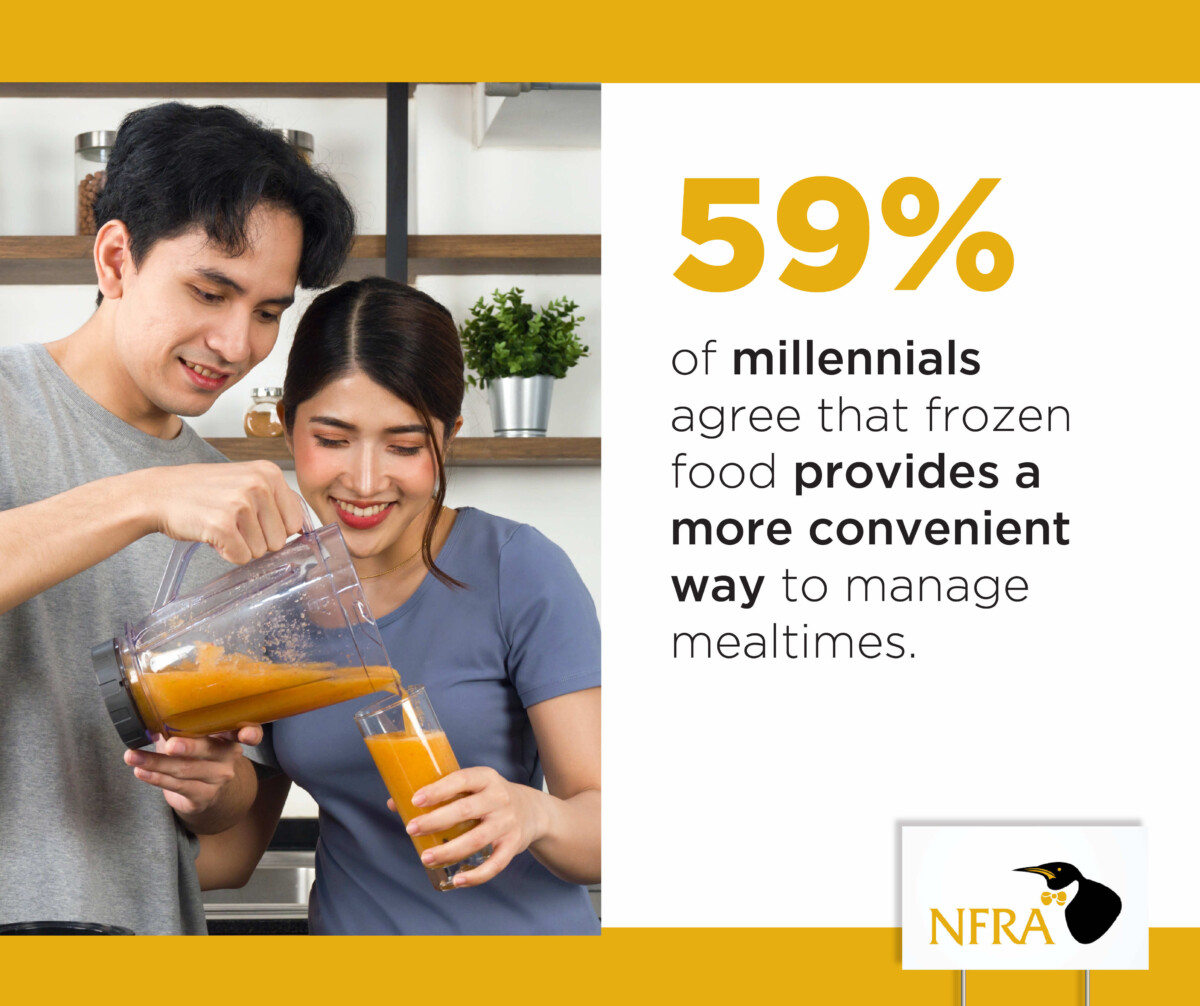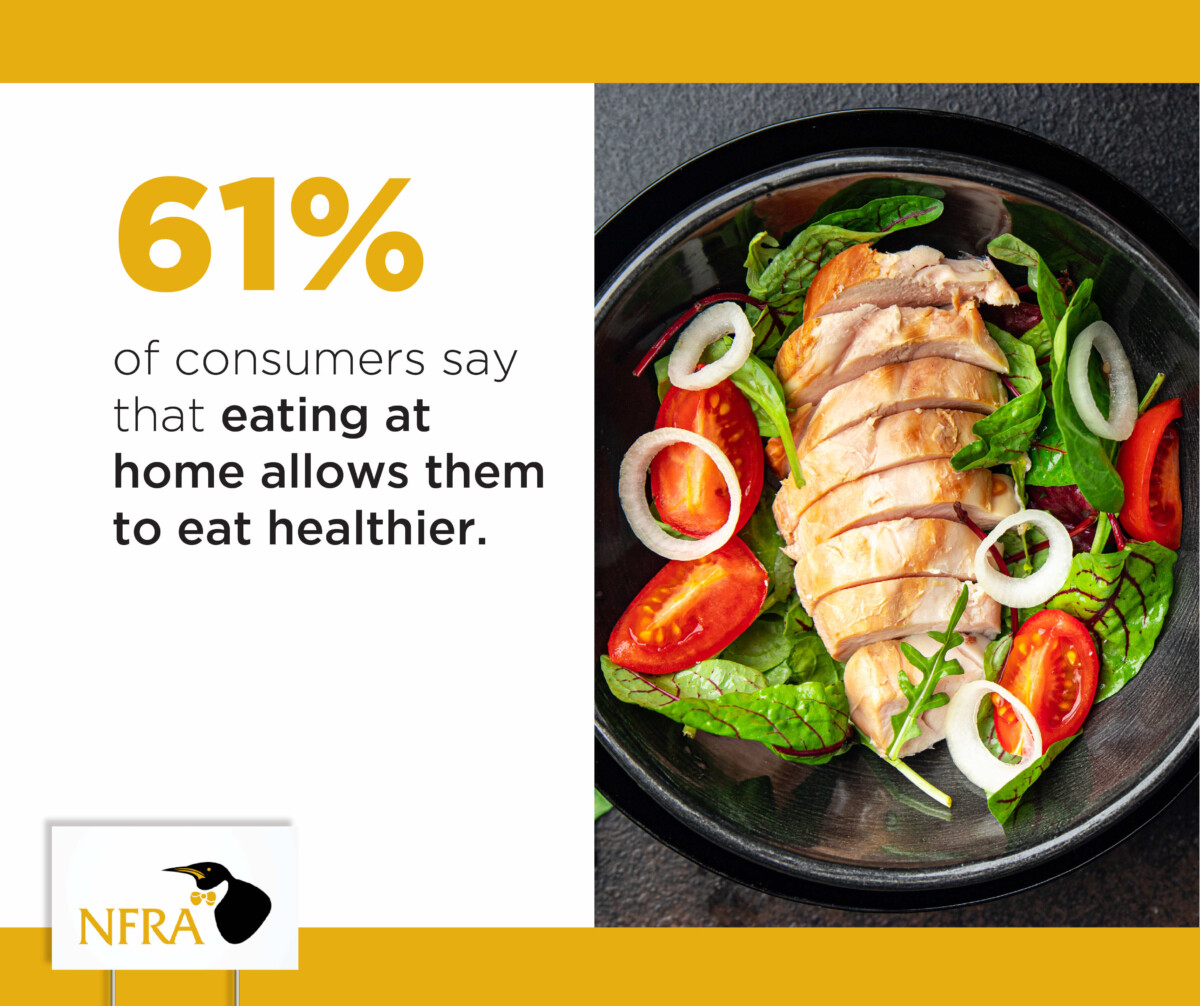Since its peak in 2020 and 2021, cooking at home has decreased slightly, but 64% of Americans are continuing to do so to save money and control their budget. The findings are part of the National Frozen & Refrigerated Foods Association’s (NFRA) latest report, “Eating at Home,” a large-scale research study conducted to better understand consumers’ changing grocery-shopping habits.
After gaining confidence in the kitchen during lockdown, Americans are looking for inspiration to DIY healthier-for-them meals at home – preferably with ingredients from deals in the frozen and refrigerated food aisles.
They are also relying more on online grocery shopping and social media for inspiration on how to use those ingredients.
Americans prioritize “healthier-for-me” options as they gain control over what ingredients go into their meals.
To gather data, researchers surveyed more than 12,000 U.S. consumers; and to gain in-depth, everyday insights, twenty consumers from across the U.S. welcomed researchers into their homes and to their local grocery stores.
Additionally, a large-scale analysis of news and social media content helped researchers identify and understand consumer perspectives surrounding frozen and refrigerated foods over the past 18 months up to mid-August of 2023.


Eating at Home Trends Report Highlights
Health-ier Choices
Americans are prioritizing “healthier-for-me” options, especially as they gain control over what ingredients go into their meals.
- Taste or flavor (66%), quality of the groceries (65%), and healthiness (49%) determine what consumers are putting in their carts.
- Nearly 3 in 5 consumers (59%) say they began cooking at home using precut frozen fruits and vegetables to save on prep time, using frozen main dishes that are easier to prepare while making their own side dishes, or using frozen fruit in recipes for smoothies or other treats sometime within the past three years.
Convenient and Cost-Effective Options
Convenience doesn’t mean people are just putting frozen dinners in the oven. They’re making some dishes from scratch while using frozen foods and dairy aisle finds to make their home-cooked meals complete.
As shoppers continue to explore new tastes and recipes, they’re also taking notice of increased variety within the frozen and dairy aisles – as well as hunting for deals to help their budget.
Related Article: Why Omnichannel Shoppers are the Best Clients?
- 93% of consumers indicate they buy milk or are always looking out for offers on milk when shopping in the dairy aisle. In that same group, more than two-thirds (68%) are always on the lookout for milk alternatives/flavored milk or indicate they purchase milk alternatives/flavored milk occasionally or frequently when shopping in the dairy aisle.
- 45% of consumers rely on air fryers, and 43% use slow cookers to cook and prepare food. As of September 2023, there were 9.7 billion views of videos tagged with #airfryer (Media analysis, Atomik Research 2023).
Technology’s Growing Role in the Food We Eat
Technology and social media are having a major influence in shifting how and what Americans eat. Consumers are adopting online grocery shopping and looking to social media for cooking inspiration to make eating at home more convenient or to fill in the gaps when they don’t have the skillset for making a recipe.
- More than half (54%) of consumers are learning about food and cooking through TikTok and YouTube.
- A third of consumers (33%) prefer to shop for groceries online because automated recommended purchases / ‘programmatic reminders’ help ensure that they never forget the ingredients they need for recipes.
“This is the largest research undertaking from the NFRA on behalf of the frozen and refrigerated food industry, with the results yielding directional insights for food manufacturers on consumer trends,” said NFRA President and CEO Jeff Rumachik.
NFRA is a non-profit trade association representing all segments of the frozen and refrigerated foods industry. The association provides consumer information such as food safety guidelines, meal preparation tips, and recipes.


